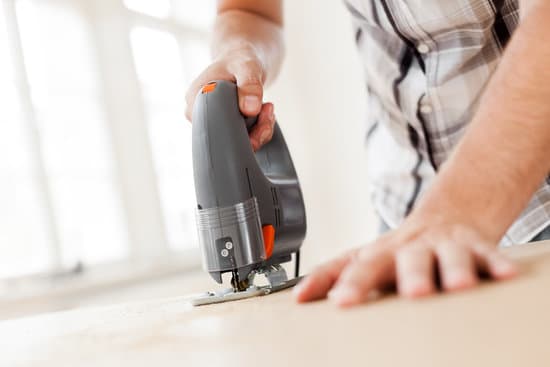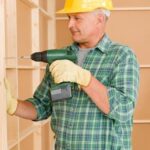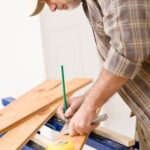Are there energy loans for home improvements? Homeowners looking to make their homes more energy-efficient may wonder about potential financial assistance. Energy-efficient home improvements not only benefit the environment but also result in cost savings and increased comfort for residents. From insulation to solar panels, these upgrades can make a significant impact on a household’s energy consumption.
Investing in energy-efficient home improvements can lead to long-term benefits beyond just reducing monthly utility bills. By upgrading insulation, windows, HVAC systems, or installing solar panels, homeowners can lower their carbon footprint and contribute to environmental sustainability. Additionally, these improvements can enhance the overall comfort and livability of a home, creating a more pleasant living space for occupants.
While the upfront costs of energy-efficient upgrades may seem daunting, there are various financial incentives available to help offset expenses. Tax credits, rebates, and grants are some options that homeowners can explore to make their projects more affordable. Additionally, energy loans provide another avenue for financing these improvements, allowing homeowners to spread out the cost over time while still reaping the benefits of a more efficient home.
Benefits of Energy-Efficient Home Improvements
Energy-efficient home improvements offer a myriad of benefits that go beyond just reducing energy consumption. One of the most significant advantages is cost savings. By investing in energy-efficient upgrades like insulation, high-performance windows, efficient HVAC systems, and solar panels, homeowners can lower their utility bills significantly.
Over time, these cost savings can offset the initial investment in the upgrades, leading to long-term financial benefits. Additionally, energy-efficient homes often have higher resale values, further increasing the return on investment.
Beyond financial gains, energy-efficient home improvements also have a positive environmental impact. Reduced energy consumption means lower greenhouse gas emissions and a smaller carbon footprint. By choosing sustainable building materials and technologies for home upgrades, homeowners can contribute to a healthier planet and help combat climate change. It’s a small but important step towards creating more environmentally-friendly communities and reducing our reliance on fossil fuels.
Lastly, energy-efficient home improvements can enhance the overall comfort and livability of a home. Proper insulation and high-performance windows can help regulate indoor temperatures, keeping homes cooler in the summer and warmer in the winter. Efficient HVAC systems ensure consistent heating and cooling throughout all seasons.
Homeowners will not only enjoy a more comfortable living environment but also experience improved indoor air quality due to better ventilation systems. These factors all contribute to creating a healthier and more pleasant home for occupants.
Types of Energy-Efficient Home Improvements
Energy-efficient home improvements offer a wide range of benefits, not only for the environment but also for homeowners’ wallets and overall comfort. By focusing on areas like insulation, windows, HVAC systems, and solar panels, individuals can make significant strides in reducing their energy consumption and costs over time.
Insulation
Proper insulation is essential for maintaining a comfortable indoor temperature and reducing energy waste. Upgrading or adding insulation to walls, attics, and floors can help regulate the temperature in your home and lower your heating and cooling bills. Whether it’s fiberglass, spray foam, or cellulose insulation, investing in this area can have long-term benefits for homeowners.
Windows
Windows play a crucial role in the energy efficiency of a home. Energy-efficient windows with features like double-paned glass, low-emissivity coatings, and insulated frames can help minimize heat loss during the winter and prevent unwanted heat gain during the summer. By installing high-performance windows, homeowners can improve comfort levels indoors while also reducing their reliance on heating and cooling systems.
HVAC Systems
Heating, ventilation, and air conditioning (HVAC) systems are major consumers of energy in most homes. Upgrading to an energy-efficient HVAC system can lead to substantial cost savings over time. Whether it’s replacing an old furnace with a high-efficiency model or installing a programmable thermostat to optimize heating and cooling schedules, there are various ways to make your HVAC system more energy-efficient.
Solar Panels
Solar panels have become increasingly popular as a sustainable energy solution for homeowners looking to reduce their carbon footprint and electricity bills. By harnessing the power of the sun, solar panels generate clean electricity that can be used to power homes. While the initial investment may seem daunting, there are financial incentives available to help offset the costs of installing solar panels, making them a viable option for those looking to go green without breaking the bank.
Incorporating these types of energy-efficient home improvements not only reduces utility costs but also contributes to environmental conservation efforts. With multiple options available for upgrades such as insulation, windows, HVAC systems, and solar panels – homeowners have ample opportunities to make their homes more sustainable. By taking advantage of energy loans for home improvements specifically tailored towards these projects individuals can enhance both their living space as well as long-term savings potential.
Financial Incentives for Energy-Efficient Home Improvements
Financial incentives play a crucial role in encouraging homeowners to invest in energy-efficient home improvements. In addition to tax credits, rebates, and grants, there are also energy loans available that can help finance these projects. These financial incentives not only make it more affordable for homeowners to make upgrades but also contribute to a sustainable environment by reducing energy consumption.
Here are some of the key financial incentives that homeowners can take advantage of when considering energy-efficient home improvements:
- Tax Credits: The federal government offers tax credits for eligible energy-efficient upgrades such as installing solar panels, geothermal heat pumps, or energy-efficient appliances. These credits can help offset the cost of the improvements and reduce the homeowner’s tax liability.
- Rebates: Many utility companies and state governments offer rebates for installing energy-efficient products like insulation, windows, or high-efficiency HVAC systems. These rebates provide an upfront financial incentive for making eco-friendly upgrades.
- Grants: Some nonprofit organizations, local governments, or environmental agencies may provide grants to fund energy-efficient home improvements. These grants do not need to be repaid and can significantly lower the out-of-pocket expenses for homeowners.
While these financial incentives offer immediate benefits for homeowners looking to improve their homes’ energy efficiency, they may not cover the full cost of the project. This is where energy loans come into play, providing homeowners with access to additional funds to complete their desired upgrades.
Whether you are looking to install solar panels on your roof or upgrade your windows for better insulation, exploring options like tax credits, rebates, grants, and energy loans can make a significant difference in both your finances and environmental impact. By taking advantage of these financial incentives, you can enhance your home’s efficiency while saving money in the long run.
Overview of Energy Loans
Energy loans are becoming an increasingly popular option for homeowners looking to make energy-efficient upgrades to their homes. These loans provide a way for individuals to finance projects that improve energy efficiency, reduce utility costs, and contribute to a more environmentally friendly household. Energy loans can cover a variety of improvements, such as installing solar panels, upgrading windows and doors, or enhancing insulation.
One key aspect of energy loans is that they are specifically designed for home improvement projects that focus on increasing energy efficiency. These loans typically have lower interest rates than traditional personal loans or credit cards, making them a cost-effective financing option for homeowners. Additionally, some energy loans may offer flexible repayment terms and longer loan terms compared to other types of financing.
One of the main benefits of energy loans is that they can help homeowners save money in the long run by reducing their energy bills. By investing in energy-efficient upgrades, homeowners can enjoy lower utility costs over time, recouping the initial investment made through the loan.
Furthermore, these improvements can increase the overall comfort of the home and add value to the property. Overall, energy loans provide a practical and sustainable way for homeowners to make impactful changes to their living spaces while also benefiting financially in the future.
| Key Benefits | Example |
|---|---|
| Lower interest rates | A homeowner installs solar panels using an energy loan with competitive interest rates |
| Cost-effective financing | Upgrading windows and doors through an energy loan results in reduced utility bills over time |
| Increased home value | An individual enhances insulation with an energy loan, improving overall comfort and property resale value |
Finding the Right Energy Loan for Your Home Improvements
When considering energy-efficient home improvements, one key aspect to explore is the various energy loans available to homeowners. These loans can provide the necessary financial support to make upgrades that enhance energy efficiency in your home. Before diving into any specific loan option, it is crucial to research the available choices, compare rates, and understand the terms associated with each loan.
Researching Energy Loan Options
Start your journey towards finding the right energy loan by conducting thorough research on the different options available in the market. Look into government-backed programs, financial institutions offering green financing, and local initiatives that support energy-efficient home improvements. Each of these avenues may have distinct features and requirements, so it’s essential to gather comprehensive information before making a decision.
Comparing Rates and Terms
Once you have identified potential energy loans for your home improvements, compare their interest rates and repayment terms. Some loans may offer fixed rates while others may have variable rates, so understanding how these rates can impact your overall costs is vital.
Additionally, pay attention to any associated fees or charges, as they can significantly influence the total amount you’ll need to repay. By comparing rates and terms across different loan options, you can select the one that best aligns with your financial goals and needs.
Steps to Apply for an Energy Loan
Energy loans can be an excellent financial tool for homeowners looking to make energy-efficient upgrades to their homes. These loans are specifically designed to help cover the costs associated with projects like installing solar panels, upgrading HVAC systems, improving insulation, or replacing windows with more energy-efficient options.
By investing in these types of home improvements, not only can homeowners reduce their energy bills over time, but they can also decrease their environmental impact and increase the overall comfort of their living spaces.
One key aspect of applying for an energy loan is properly preparing your home improvement project. This involves assessing your current energy usage, identifying areas where improvements can be made, and establishing a clear plan for the upgrades you want to undertake. By having a well-defined project scope and goals, you can ensure that you are requesting the right amount of financing from the energy loan provider.
In addition to preparing your home improvement project, gathering necessary documents is another crucial step in the application process for energy loans. Lenders will typically require documentation such as proof of income, credit history, detailed estimates from contractors for the proposed upgrades, and any other relevant financial information.
By having all of these documents ready and organized before applying for an energy loan, you can streamline the approval process and increase your chances of securing financing for your desired home improvements.
| Key Documents | Description |
|---|---|
| Proof of Income | Evidence of your financial ability to repay the loan |
| Credit History | Show lenders your creditworthiness and ability to manage debt |
| Estimates from Contractors | Detailed breakdowns of costs for proposed home improvements |
Success Stories
Many homeowners are taking advantage of energy loans for home improvements to make their properties more energy-efficient. These loans provide a way for individuals to finance projects that can ultimately save money on utility bills, reduce their environmental footprint, and increase the comfort of their homes. By investing in upgrades like insulation, energy-efficient windows, HVAC systems, and even solar panels, homeowners can not only improve their quality of life but also contribute to a sustainable future.
One success story comes from a family in Ohio who decided to upgrade their home with energy-efficient improvements using an energy loan. By installing new insulation, upgrading to high-efficiency windows, and investing in a smart thermostat, they were able to significantly reduce their energy consumption.
As a result, they saw a noticeable decrease in their monthly utility bills and enjoyed a more comfortable living environment throughout the year. The upfront cost of the improvements was covered by the energy loan, allowing them to make these enhancements without straining their budget.
Another homeowner in California utilized an energy loan to install solar panels on their property. With the help of the financing option, they were able to generate clean electricity from renewable sources and reduce their reliance on conventional power grids.
Not only did this decision lead to long-term savings on electricity costs but it also positioned them as environmentally conscious individuals contributing positively to the fight against climate change. These success stories showcase how energy loans for home improvements can benefit both homeowners and the planet simultaneously.
Conclusion
In conclusion, energy-efficient home improvements offer a myriad of benefits ranging from cost savings to reducing environmental impact and enhancing the overall comfort of your living space. By investing in upgrades such as insulation, windows, HVAC systems, or even solar panels, homeowners can not only save money on their utility bills but also contribute to a greener future for our planet.
Financial incentives like tax credits, rebates, and grants further sweeten the deal when embarking on energy-efficient home improvement projects. However, for those looking to make larger upgrades that may require substantial upfront costs, energy loans can be a viable option. These loans provide the necessary funds to make improvements while allowing homeowners to repay the investment over time.
If you find yourself considering energy-efficient home improvements but are unsure about financing options, remember that there are energy loans available that can help make your project a reality. Take the time to research different loan options, compare rates and terms, and prepare all necessary documents before applying.
With the right information and planning, you too can join the ranks of successful homeowners who have utilized energy loans to create more sustainable and comfortable living spaces. Don’t hesitate – take action today towards a more energy-efficient home.
Frequently Asked Questions
What Is an Energy Loan?
An energy loan is a type of financial product that allows individuals to borrow money specifically for making energy-efficient improvements to their homes or properties. These loans are designed to help cover the costs of upgrades such as solar panels, insulation, energy-efficient appliances, and more.
What Is the US Energy Savings Program?
The US Energy Savings Program is an initiative aimed at promoting energy efficiency and sustainability across the country. Through this program, homeowners and businesses are provided with resources, incentives, and information to help them reduce their energy consumption, lower utility bills, and contribute to environmental conservation efforts.
What Is the Energy Efficient Mortgage Program?
The Energy Efficient Mortgage Program is a financing option that encourages homebuyers to invest in energy-efficient features when purchasing a property. This program allows borrowers to qualify for a larger mortgage amount by considering the long-term savings associated with reduced energy bills due to energy-efficient upgrades like windows, heating systems, and insulation.

I’m thrilled to have you here as a part of the Remodeling Top community. This is where my journey as an architect and remodeling enthusiast intersects with your passion for transforming houses into dream homes.





